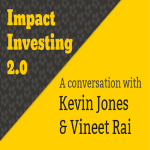 What problem are you addressing? Why should people care?
What problem are you addressing? Why should people care?
Today we live in a world that is continually shaped by life-changing advances, and these remarkable feats are driven by the evolution of technology. Yet the utilization of this technology still depends upon the presence of one of the most basic necessities of modern life: energy.
The global community is on the cusp of a massive energy crisis. The U.S. Energy Information Administration projects that the worldwide consumption of marketed energy will increase by 44 percent by the year 2030. This increase will not originate from the U.S. or the European Union, but in non-Organisation for Economic Co-operation and Development (OECD) areas such as India, Africa, and Brazil. The proliferation of modern technology in these countries, in large part due to increased access to cheap electronics, will merge with the exploding purchasing power of expanding middle class populations to fuel a surge in demand for energy in the coming years.
The condition of overstrained power infrastructure acutely magnifies the problem in these nations where current energy consumption has already exceeded energy production. Furthermore load shedding and grid mismanagement creates rampant electricity blackouts and brownouts.
The world bank estimates that a business or hospital in a typical developing economy experiences over eighteen power outages a month. Annual regional value lost due to power outages as a percent of sales in developing countries ranges between four to eleven percent.
Energy poverty, the lack of power as it impacts quality of life, hinders every building block of modern society. Citing statistics cannot fully communicate the dire consequences of this problem effectively. Doctors lose power in the middle of surgery. Schools are unable to hold evening literacy classes due to lack of reliable lighting. Entire villages struggle to endure droughts or suffer life-threatening illnesses because they lack energy to pump the potable drinking water that lies directly beneath their land. Businesses lose valuable productivity, time, and sales. In the United States power outages and fluctuations are viewed as a rare inconvenience, but for millions of people across the world such occurrences are a debilitating reality of everyday life.
Most citizens from OECD countries utilize portable generators during electrical outages. However, small businesses, households, and hospitals in developing economies cannot afford such luxuries when the capital cost of a single generator can be well over $300-$500 and the price of fossil fuels in developing countries are consistently higher than prices in the US. While generators seem to be the most viable solution for large, more established companies, recent data affirms that due to the exorbitant cost of fuel, only 54 percent of large firms (over 250 employees) in developing countries own a generator despite demonstrated losses in sales due to the outages. The only other alternative for back-up power is an uninterruptible power supply (UPS), but most commercial UPS units cost between $80 and $1,000. While the lower spectrum of UPS units offer an attainable price point, the average UPS under $150 can only run a 300 watt device such as a computer for just seven to fifteen minutes. This service time is not sufficient as most outages in the developing world last for between two and four hours.
Concurrently, habitual consumerism and proliferation of cheap electronics drive the disposal of vast quantities of electronics, with over 130,000 computers discarded daily in the US alone. As stated above, over 400 million units of environmentally hazardous electronic waste are discarded worldwide annually, 80 percent of which ends up in landfills. Obviously, this incredible pace of transporting so much toxic waste to landfills is unsustainable and when combined with the increased demand for electronic equipment world-wide, there is a dire need for the development of multiple creative uses for recycled electronic waste.
Why should an investor care? INSEAD studies indicate that there is a latent demand of $32B+ and this demand will only increase with the proliferation of consumer electronic products and population growth. Waste to Watts (www.waste2watts.org) seeks to capitalize on this enormously underserved market while offering solutions to the problems of energy poverty and electronic waste with the ENZI Interface.
The Enzi is a low-cost, modular UPS, which consists of e-cycled components and an enclosure for the system. The Enzi can incorporate a multitude of E-cycled components such as discarded power supplies from consumer electronic devices and a wide range of 12V batteries such as those found motorized vehicles on solar installations. A custom circuit that functions as the solar controller, battery charger, DC/AC inverter, and desulfator completes the system. The Enzi is an offline UPS that plugs into a single wall outlet or solar panel and provides two output receptacles. The output receptacles filter wall power when it is available and in the event of an outage, the UPS automatically switches the output receptacles over to battery backup power. W2W is able to sell the ENZI at an extremely low price point because we used recycled electronic waste.
While there are currently available UPSs on market, none of the current options meet the needs of developing world consumers. The available options fail to offer a reliable UPS that provides extended back up power for longer outages (e.g. 4-5 hrs for a laptop computer), do not use locally replaceable materials, and are not available at a price that the developing world consumer can afford. Furthermore, distribution of these products in the developing world is limited due to supply chain issues, additional cost increases as a result of distributor’s margin, and taxes imposed on imported consumer devices. Building units locally significantly reduces such issues while providing local training and employment opportunities.
The Enzi provides 3x the back up power at less than half the price of competitive units. The Enzi’s $70 price is made possible through the use of e-cycled components and in-country manufacturing, which will provide employment opportunities to the local communities and reduce VAT taxes and duties incurred during the importation process. This price point is in stark comparison $250-$1,000 cost for most similar UPS units and over $300 cost of a portable generator (excluding fuel costs).
What could you do with 100k? 500k? with 50k? (in the order)
Waste to Watts (W2W) has already raised nearly $50k in business plan competitions (MIT, U of Chicago, Georgia Tech, Dell etc) and in-kind services, and these funds have been put to good use in obtaining PCT Intellectual Property Protection, developing three iterations of the product, as well as conducting field testing and market validation studies in Africa, South East Asia, and Central America.
With 100k, W2W could complete work on the 4th generation design (which is currently being developed and optimized for mass production) and conduct a US-based low rate of production run. A seed investment of 100k would help W2W launch a preliminary 4 month white market test in India to research best practice sales tactics, establish contracts with local distributors, as well as discover proper price points. A seed capital influx of 100k would be used to market the company to Angel Investors and provide critical credibility to allow Waste to Watts to continue to pursue public and private grant institutions.
With 500k, W2W could complete the design and go into full local production on the ground in India subsequent to a 4 month white market test. Local manufacturing facilities would target 10000 units produced in the first calendar year, with 5000 units sold via distributors, direct sales, and micro-franchise entrepreneurship programs. These targets would improve the energy position of over 10000 citizens in India, and increase business productivity for each small business client by 10% (according to World Bank studies on the impact of power outages).
What experience was influential in getting you to this place?
The inspiration for Waste to Watts was born out of the founders’ experience volunteering as medical equipment technicians in Tanzania as a part of the Duke University-Engineering World Health Summer Institute. Upon repairing dozens of pieces of medical equipment in hospitals, it quickly became evident that power-related issues were a very common source of medical equipment failure. After successfully developing a backup power system for the operating room using a car battery and some discarded computer parts, the founders realized that there might be more wide spread applicability and decided to start a business aimed at meeting the challenges of energy poverty in the developing world.
SOCAP11 Social Entrepreneur Spotlight: Chris Hamman, Waste To Wats (Central America & Caribbean)
“Fact of the Day”. World Bank Online. Accessed March 15, 2010. www.worldbank.org
World Bank. “Infrastructure”. Enterprise Surveys Online. Accessed October 2010. http://www.enterprisesurveys.org/ExploreTopics/?topicid=8
Ebert S, Metschies G, et al. International Fuel Prices 2009. Gesellschaft fürTechnische Zusammenarbeit. 6th Edition. December 2009.
Foster V, Steinbuks J. “Paying the Price for Unreliable Power Supplies: In-House Generation of Electricity by Firms in Africa”. The World Bank: African Sustainable Development Office
“Common Wastes and Materials – eCyling.” Environmental Protection Agency Online. http://www.epa.gov/epawaste/conserve/materials/ecycling/index.htm




